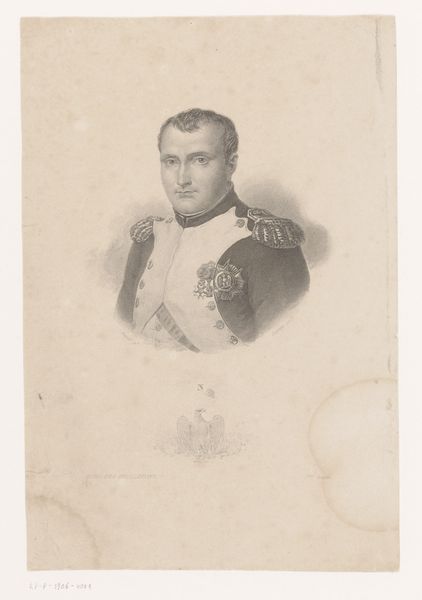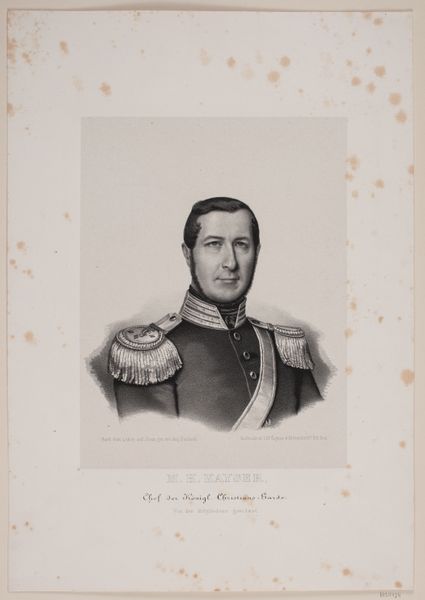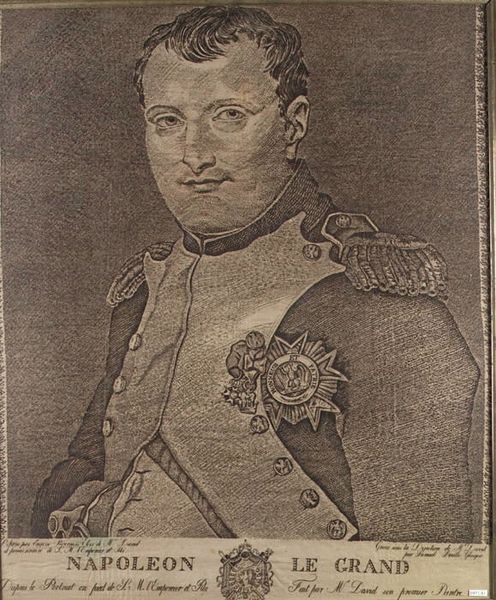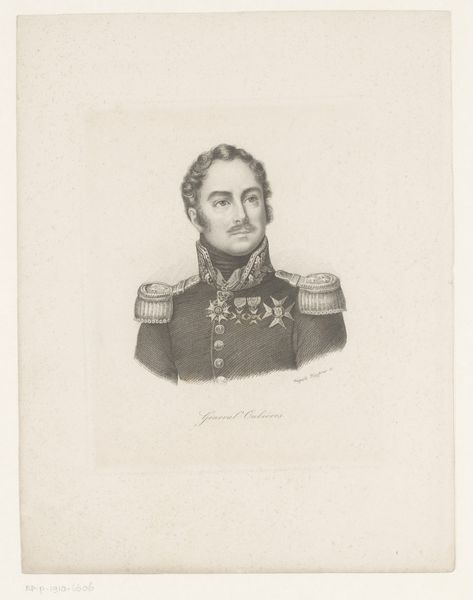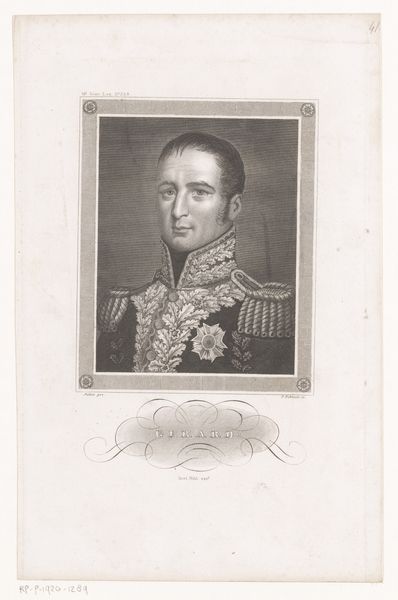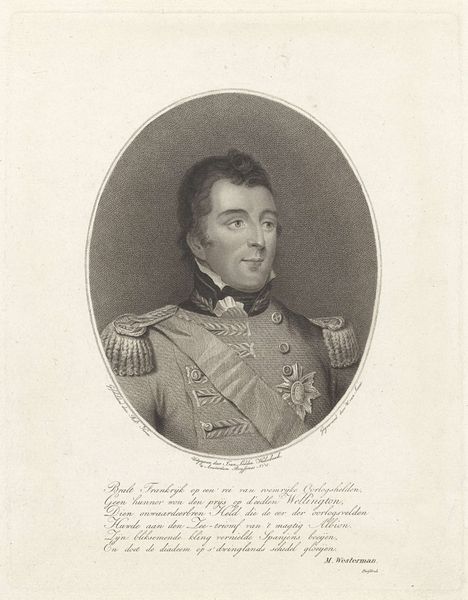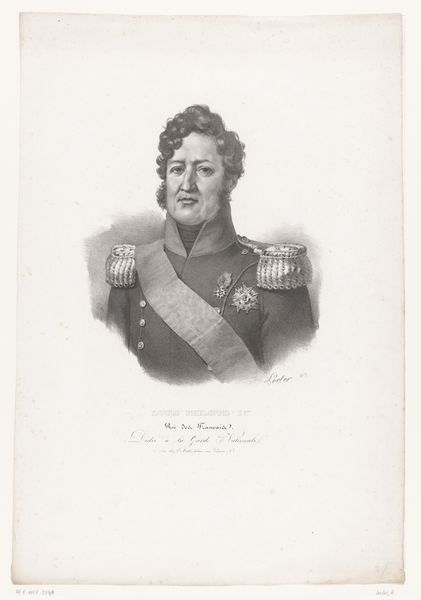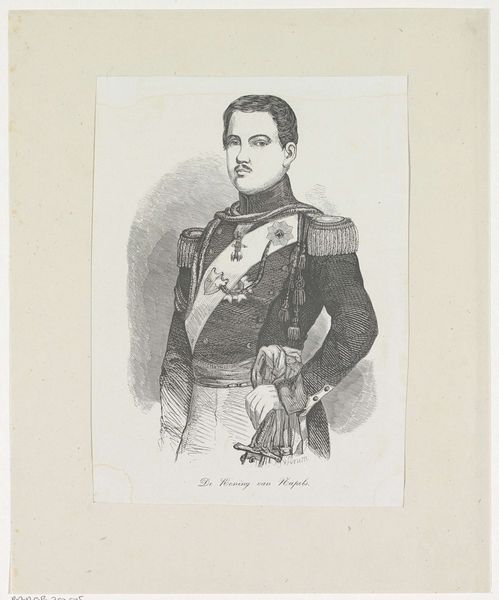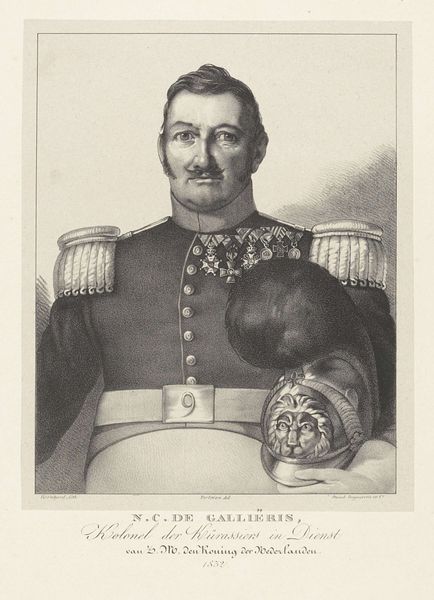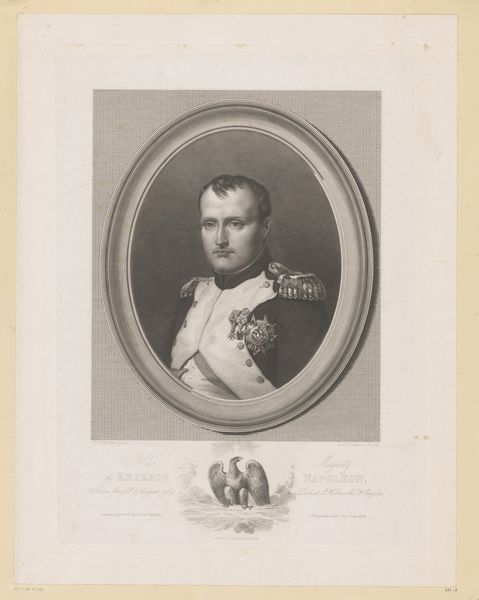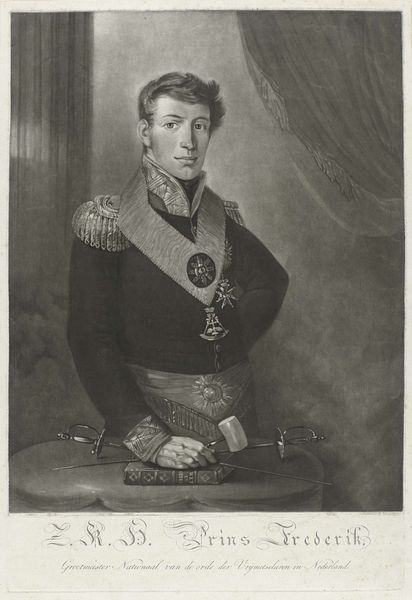
print, etching
#
portrait
#
neoclacissism
# print
#
etching
#
sculpture
#
portrait reference
#
framed image
#
history-painting
#
realism
Dimensions: height 615 mm, width 473 mm
Copyright: Rijks Museum: Open Domain
Curator: Here we have Charles Howard Hodges’ 1811 portrait of Napoleon Bonaparte. It’s an etching, a type of print. What are your initial thoughts? Editor: Somber. It’s interesting that Napoleon, someone known for action, is portrayed so still. The textures, particularly in the uniform’s embellishments, hint at luxury, but rendered in such muted tones, it feels like a ghost of extravagance. Curator: It speaks volumes, doesn't it? Etching as a medium, reproducible and more “democratic” than a painted portrait, aligns well with Napoleon's self-fashioned image as a man of the people, even as he consolidated power. Editor: Absolutely. It’s a calculated display. I'm also struck by the labor involved in creating the etching. The precise, repetitive movements needed to create this image – think about the engraver meticulously crafting each line! That’s labor directly serving power, quite literally pressing an image of authority onto the world. Curator: The symbols he wears! The starburst medal… all intended to create the aura of an emperor, of divinely sanctioned rule. We have become so accustomed to his image it’s easy to overlook the deliberate construction of visual power. Editor: It makes me think about how that iconography permeated everyday life. These images were circulated, consumed...feeding a culture of Bonapartism. Curator: Precisely. And Hodges, by creating a print rather than a singular painting, participates in that wider dissemination of the Napoleonic image. It's less about capturing an individual and more about manufacturing a legend. Editor: Seeing how tangible and reproducible that legend was underscores how much work went into building it. All of it dependent on materials and modes of production that are easily missed if we focus too much on what Napoleon supposedly represented. Curator: A valuable insight! It reveals the potent intersections of craft, image, and authority that history tends to flatten. Editor: It brings a new level of insight to consider the amount of work put into what seemed natural and monumental.
Comments
No comments
Be the first to comment and join the conversation on the ultimate creative platform.
